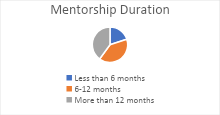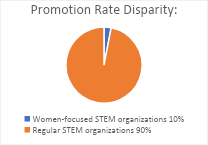Introduction
Despite the scope of the movements to counter gender disparities in STEM, they continue to exist. Responding to this trend requires every effort to create mentorship programs to fill the gap (Emon et al., 36). Here, we plan to assess the effectiveness of the mentorship programs of women-centric STEM societies (NCWIT, AWIS, SWE) against a few general STEM institutions (AAAS, NASA, NSF). This comparative study examines the impact of mentorship programs in eliminating the existing inequality lines within the STEM (science, technology, engineering and mathematics) fields.
Methodology
This research has implemented the comparative case study methodology, analyzing mentorship programs in chosen organizations. Data gathering techniques involved interviews, surveys, and scrutinization of relevant records. Data from mentorship frameworks was systematically scrutinized to uncover recurrent attributes and characteristics. Moreover, the study already assessed whether these mentorship programs can be used to minimize the gender gap in STEM areas. Ultimately, my study utilized a comprehensive methodology to give comprehensive information on the mentorship programs’ effectiveness in promoting gender equity in STEM fields.
Case Studies
Organizations were fundamentally analyzed in each case study to get a quadrant view of their mentorship initiatives. The study revolved around examining critical components of the program, for instance, architecture, the overall objectives, sample size, and indicators of success. This research required looking into the essential parts of each organization to obtain a more in-depth understanding of the intricacies of the programs; through this thorough analysis, the questions and answers about the mentorship practices in these different women-oriented STEM organizations and STEM organizations, in general, could be addressed and analyzed (Sullivan-Baca et al., 401).
Identifying Mentorship Patterns
The mentorship structures and relationships in organizations aimed at women had to be investigated by regularly working to discern the consistencies of the structure and patterns of the relationships. More specifically, this included reviewing several aspects, such as the length of the relationship between a mentee and a mentor, the number of sessions they had, and the concentration of the program’s focus. The research would delve into the reasons to discover what they share in common and what is unique about them when talking about mentorship in women-oriented STEM associations.
Analyzing Mentorship Structures
However, a look into the mentoring structures of regular STEM organizations aimed to find any exclusive or imbalanced trends. On the other hand, this inquiry covered an investigation into factors such as the availability of mentoring programs and the degree of organizational support extended to mentors and mentees (Shen et al., 448). The study intends to find out if there are any remarkable distinctions in support structures for women-focused STEM organizations and general STEM groups, consequently helping to comprehend factors that affect mentorship in the STEM realm.
Comparing Mentorship Structures
Once the analogies between women-themed and regular STEM organizations were determined, they were compared to find common ground and dissimilar features. The contradistinction between the organizations allowed the students to delve fully into the different mentorship programs. In regard to the intricacies of mentorship structures, the research aimed to identify weak sides and the best practices that could be used for other STEM mentor programs through the academic discipline to create a more gender-inclusive and equal environment.
Examining Effects on Gender Imparity
To evaluate the role of mentorship patterns on gender imbalances in STEM fields within the organizations, the work process was explored employing success indicators such as career advancement and retention rates. This way, the success of mentorship programs in resolving gender inequalities could be well evaluated (Kong et al., 59). This comprehensive study had two goals: finding out which mentoring structures support gender parity within STEM institutions most of all and using the study’s findings to develop quality mentorship initiatives and create workspaces that would be gender-neutral and favour the professional growth of everyone alike.
Comparing Gender Disparity Percentage
That was achieved by calculating the gender disparity percentages in the women-focused and regular STEM organization’s workforces to see whether female mentorship patterns in women-focused organizations resulted in a lower gender disparity percentage among the STEM workforce than in regular STEM organizations. The comparative assessment was intended to identify if there were any marked differences in gender representation given the nature of organizations and also to examine the effects of mentorship programs in terms of diminishing the gender gap in STEM industries. This assessment will allow us to see the result of the implemented initiatives in the mentoring field that can reveal the value of gender equity in STEM.
Graphical Representation
Different types of diagrams, such as bar charts, pie charts, line graphs and scatter plots, were used to picture the differences in mentorship patterns and gender strangeness percentages between women-centred and regular STEM organizations. The combination of graph types allowed for different aspects of the data to be demonstrated through an overall comprehension of the comparative study. By merging various graphical formats, the research findings on mentorship and the gender gaps in STEM were communicated, which helped the participants’ memories for the presentation better.
Mentorship Program Components



Gender Disparity Percentages:



Conclusions
The study found that the mentoring programs of women-centred organizations differ significantly from those in regular STEM organizations, with a growing emphasis on networking and career guidance. Also, these programs can be counted on as the ones that have been proven to be effective for addressing the gender imbalance in STEM in comparison to the ones in the field of STEM in general. Emphasis on networking and career structuring makes effective mentorship programs more successful in resolving gender discrepancies and achieving gender equity in STEM.
Recommendations
Enhancement of mentorship programs is the main goal for both women-centred and regular STEM organizations, so they should focus on accessibility, diversity training, and organizational support issues. Strategies mentioned are establishing mentorship networks and implementing mentorship training programs for building gender inclusivity and equity in STEM through initiatives like mentorship. By applying the above measures, organizations may develop more inclusive and empowering working conditions that contribute to the increasing number of women and underrepresented interested in STEM fields.
Work Cited
Emon, Mehedi Hasan, and Meherun Nisa Nipa. “Exploring the Gender Dimension in Entrepreneurship Development: A Systematic Literature Review in the Context of Bangladesh.” Westcliff International Journal of Applied Research 8.1 (2024): 34-49.https://www.researchgate.net/profile/Md-Mehedi-Hasan-Emon/publication/377409594_Exploring_the_Gender_Dimension_in_Entrepreneurship_Development_A_Systematic_Literature_Review_in_the_Context_of_Bangladesh/links/65a5618a47fc9041629b0fe5/Exploring-the-Gender-Dimension-in-Entrepreneurship-Development-A-Systematic-Literature-Review-in-the-Context-of-Bangladesh.pdf
Kong, Stephanie, et al. “Reducing gender bias in STEM.” MIT Science Policy Review 1 (2020): 55-63.https://www.researchgate.net/profile/Paige-Omura/publication/343770759_Reducing_gender_bias_in_STEM/links/6093fc40299bf1ad8d7f9190/Reducing-gender-bias-in-STEM.pdf
Shen, Mary R., et al. “Impact of mentoring on academic career success for women in medicine: a systematic review.” Academic Medicine 97.3 (2022): 444-458.https://www.ingentaconnect.com/content/wk/acm/2022/00000097/00000003/art00034
Sullivan-Baca, Erin, et al. “Promoting gender-informed mentorship in neuropsychology: Reflections and suggestions from early career women.” Journal of Clinical and Experimental Neuropsychology 44.5-6 (2022): 398-408.https://www.tandfonline.com/doi/abs/10.1080/13803395.2022.2107184
 write
write